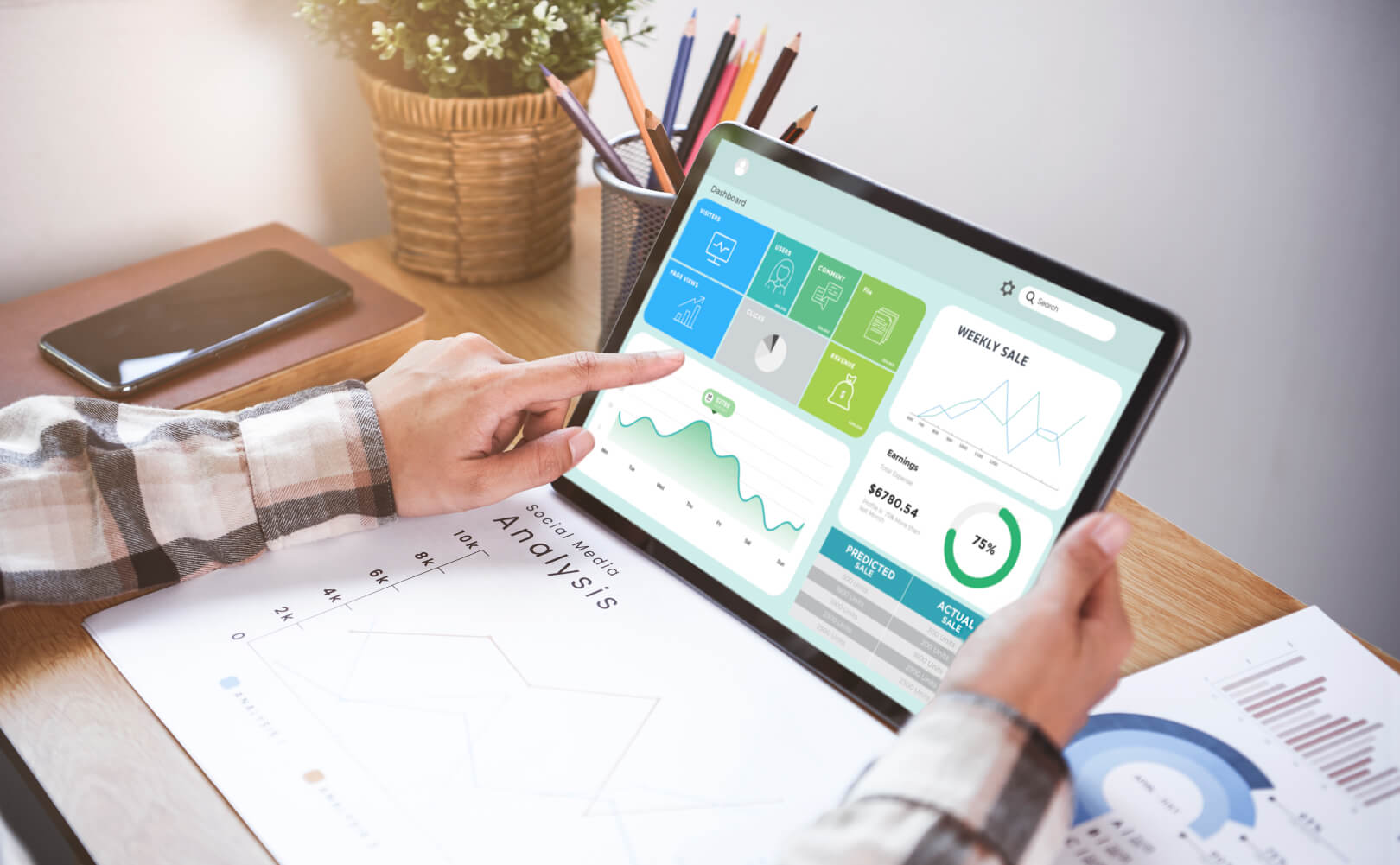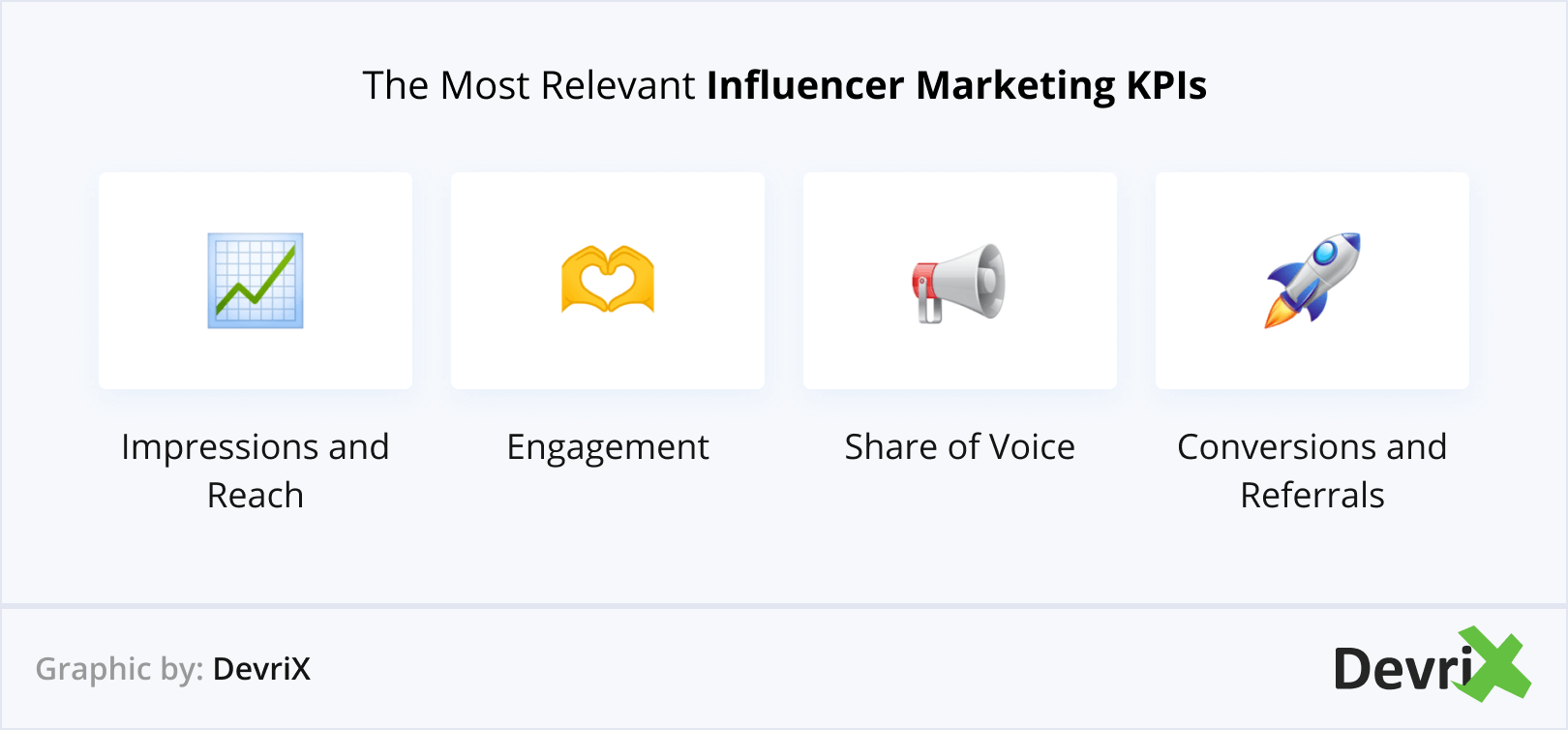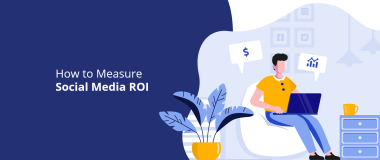Can you believe that a few years ago influencer marketing was merely a buzzword that many didn’t quite understand? Things have certainly changed since then. Today many brands invest a good amount of resources in making these strategic partnerships work and measure that success through something called influencer marketing ROI.
Influencers play a vital role in connecting businesses and customers, in a way that naturally resonates with the brand’s values while also delivering good returns. Therefore, if you want to build successful influencer marketing campaigns, monitoring the return on investment, or ROI, is very important.
By definition ROI refers to tracking performance to see if the returns or benefits you receive outweigh the time and money you have invested.
Luckily, there are many ways to obtain quality data and measure the aspects of your influencers marketing efforts, such as social media metrics, Google Analytics, affiliate links, etc.
However, note that how you assess your influencer marketing ROI strongly depends on your goals. Although the most common evidence of a successful strategy are conversions and sales, there are other aspects that can benefit your campaign, such as awareness, visibility, engagement, and content quality.
Justifying campaign budgets is one of the main challenges for marketers today. Therefore in this article, we will show you how to track and improve your influencer marketing ROI and optimize performance. So read on and take notes!
What Does Influencer Marketing ROI Mean?

With over 240 influencer marketing agencies and platforms out there and an expected 25% surge in yearly marketing budgets devoted to influencers, this industry is on its way to reach $13.8 Billion.
These numbers are amazing! But how can brands be sure that their investment yields results? How can they measure their influencer marketing ROI?
In today’s digital environment, few topics confuse marketers as much as ROI. The process of tracking it can be long and overwhelming, there are huge amounts of data and countless tools to choose from. Furthermore, when it comes to influencer marketing, there are third-parties involved, and this makes it even more complicated. It’s difficult to follow the conversion path and connect influencer marketing efforts with business results.
In itself, ROI is the ultimate indicator of success. It shows whether the campaign made a difference to the bottomline, or not. If the answer is yes, great! If not, then a different approach is needed.
However, even though we are so used to quantifying ROI in monetary terms, what you actually measure depends largely on the goals of the campaign. In some cases, other returns deliver more value to the business than direct profits might.
For example, for a new business looking to enter the market, gaining visibility will be a more desired return. For brands who want to reshape their image, it will be audience recognition. And for organizations that want to feed content into their online channels, increasing the quality and boosting engagement would be a favourable outcome.
Related: Tips for Publishers: How to Master Social Media Branding
As you can see, what you want to achieve may differ between brands and campaigns. You need to know which metrics work for you, so let’s dive deeper into how to measure and improve your influencer marketing ROI.
1. Set Clear Goals and Expectations

The first step towards measuring your influencer marketing ROI is to answer the question: what is important to my brand? Do you want to grow your audience? Increase your brand awareness? Or perhaps you want to drive up engagement and boost sales?
Whatever your goal is, define it and set clear expectations. Otherwise, you will not know what key performance indicators (KPIs) to monitor.
Additionally, remember that there are also some intangible aspects to measuring ROI. Influencer marketing is valuable because it gives organizations access to a trusted audience. When collaborating with public figures, you are essentially investing in the trust they have built up with their following, hoping that it will result in more sales for you.
Unfortunately, trust is not easily quantifiable. So, your safest bet is to use the right metrics that indicate how much confidence people place on influencers.
2. Choose the Most Relevant KPIs

While you may be tempted to track every piece of data from your influencer marketing campaign, focusing on the most useful insights is the best idea. To avoid information overwhelm, narrow your focus on the following four most relevant KPIs.
Impressions and Reach
If your influencer marketing strategy’s focus is on increasing brand perception and awareness, then impressions and reach are the most important metrics to track. These can be found on the insights page of every influencer marketing platform. But before using them, learn the difference:
- Impressions are the number of times a social media post appears in someone’s feed.
- Reach reflects the potential number of views your promotional content can have. This includes the influencer’s follower count as well as anyone who shares the post.
Businesses launching a new product, brand or store, will be interested to share this news with as many users as possible. For such cases, impressions and reach are the best ROI indicators.
Related: Social Media Marketing Tips for SaaS Products
TIP: If you have multiple influencer marketing goals, use other metrics in combination with these. While impressions and reach can give you valuable insights about your content’s potential to attract prospects, if you want to promote educational content, for example, engagement matters as well.
Engagement
Influencer marketing engagement is a big umbrella category. Essentially, it is used to track how involved the audience is with the content and thus how effective the campaigns are.
Every influencer marketing platform has a set of engagement metrics. These usually have similar functions, but could be named differently – e.g. Shares vs. Retweets.
Overall the most common engagement metrics are:
- Likes, Comments, Shares/Retweets, etc.
- Post engagement.
- Brand and account mentions.
TIP: When evaluating your engagement strategy, always look at the metrics within context. For instance, if you post a beautiful image with a caption that isn’t meant to be a call to action and it receives a lot of likes, then you have a good ROI. However, if the point was to encourage comments and shares and that didn’t happen, then you need to make adjustments.
Share of Voice
The share of voice measures how many people are talking about your brand online compared to your competitors. It’s often used in paid advertising, public relations, or when performing a competitive analysis.
This metric indicates how well your influencer marketing strategy is working at keeping your brand present in your audience’s minds. It’s a KPI that is easier to measure compared to word of mouth, and that can give you a good idea of how your popularity changes over time, so you can spot insights and improve your influencer marketing efforts.
Conversions and Referrals
Conversions and referrals are very important influencer marketing ROI metrics. They are closely linked to any company’s sales and marketing goals, social media ROI and ultimately, business success.
- Referrals indicate how a user lands on your website – i.e. from which social media platform.
- Conversions in influencer marketing happen when a user visits your website through a social media channel and completes a desired action. This can be subscribing to your newsletter, signing up for an online event, or making a purchase.
TIP: To get valuable insights from these metrics, use website traffic analytics software like Google Analytics that incorporates UTM parameters. This will give you a detailed view of the different sources your traffic comes from, so you can leverage them for a better ROI.
3. Consider Channel Performance

When it comes to measuring influencer marketing ROI, social media channels aren’t created equal. Each platform supports unique content formats, has different engagement levels, and offers various depths of analytics.
So, when planning your influencer marketing campaign, it’s essential to consider which are the most effective channels for influencer marketing, and how easy you can track their performance.
Here is a short overview of the most popular platforms and their correlation to measuring influencer marketing ROI.
According to BigCommerce, Instagram is the number one social media channel for influencer marketing. Today, practically everyone is on Insta – not just casual users but business too, making it a true social media powerhouse that B2B and B2C businesses from various industries can leverage.
The best way to achieve a good ROI from this platform is via Instagram Stories. These allow both verbal and visual call-to-actions (CTA) on a short video and a trackable link through the “Swipe up” feature. Influencers can even offer coupon codes, encourage social commerce, and do livestream shopping events.
YouTube
YouTube – the second largest search engine after Google, provides plenty of opportunities for influencer collaborations. Its long-video format content attracts highly-engaged visitors allowing for an in-depth representation of a product or a brand, and better ROI.
The key CTAs here are verbal and visual. There’s also the option for adding trackable links, and coupon codes.
TikTok
If you’re looking for a way to create an outstanding influencer marketing campaign that resonates with younger audiences, then TikTok is the medium to try.
TikTok is relatively new on the influencer marketing scene, but it’s taking it by storm. This platform is exciting, creative, and fun. However, its biggest advantages are that it’s designed for mobile, and has a unique algorithm that gives users the content they want fast.
The CTAs here are also verbal and visual, and trackable links can be added as well.
Influencer marketing is a perfect LinkedIn marketing strategy for B2B companies. After all, the nature of the platform is to link professionals and experts from across the world, and build multinational business circles.
LinkedIn supports various content formats allowing you to tailor your influencer marketing strategy to different audience segments. The main CTAs here are verbal, but there’s also the possibility to include visual ones as well. From text-posts and presentation slides to short videos and stories, there is an abundance of ways to engage your audience to get a good ROI.
Wrapping Up
Whether your goal is to increase your brand reach, provide better content and/or boost sales, give influencer marketing a try.
However, when you invest in such campaigns you do need to know what works well, and the best way to determine this is by measuring influencer marketing ROI.
Think about what matters to you and set clear goals. From there pick the most relevant KPIs, decide which platforms to use and draw up a plan to help you ensure your investment is worth it.




